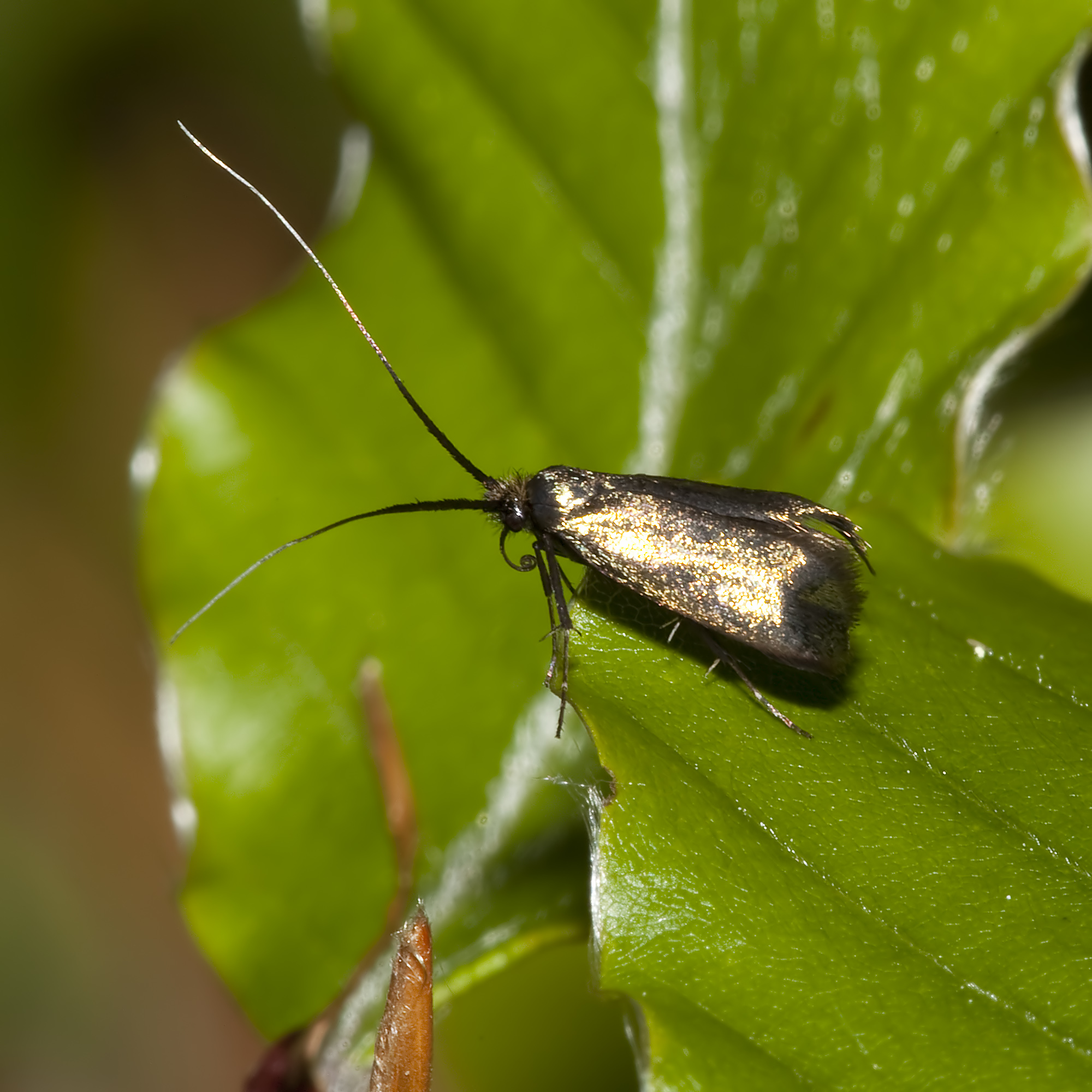|
Simacauda
''Simacauda'' is a genus of moths in the family Incurvariidae Incurvariidae is a family of small primitive monotrysian moths in the order Lepidoptera. There are twelve genus, genera recognised (Davis, 1999). Many species are leaf miners and much is known of their host plants, excluding ''Paraclemensia aceri .... Species The genus contains the following species: *'' Simacauda dicommatias'' *'' Simicauda heliocephala'' *'' Simacauda virescens'' References Adeloidea genera Taxa described in 1931 Incurvariidae {{Improve categories, date=April 2024 ... [...More Info...] [...Related Items...] OR: [Wikipedia] [Google] [Baidu] |
Lampronia Dicommatias
''Simacauda dicommatias'' is a moth of the family Incurvariidae found in South America. It was described by the English amateur entomologist, Edward Meyrick in 1931. The larvae are leaf miners and feed within the leaves of Chilean myrtle (''Luma apiculata''). In 2020 leaf mines were found at Trengwainton Garden, Cornwall; the first known occurrence in Europe. Life cycle ;Ovum Eggs have not been observed but are likely to be inserted into the underside of a leaf of Chilean myrtle, preferring new growth towards the end of a stem. ;Larvae The larvae mine the leaves, initially in a long gallery filled with black frass and often cross the midrib. The mine terminates in a small, irregular blotch often at, or near the edge or tip. Larvae then leave the mine making a larval case from the blotch; it then makes a further two cases from leaves. In Cornwall the species is univoltine with tenanted mines found in late March, late June and in the autumn. Larvae have not been found in Argentina ... [...More Info...] [...Related Items...] OR: [Wikipedia] [Google] [Baidu] |
Simacauda Virescens
''Simacauda virescens'' is a moth of the family Incurvariidae. It was described by Nielsen and Davis in 1981. It is found in Argentina Argentina, officially the Argentine Republic, is a country in the southern half of South America. It covers an area of , making it the List of South American countries by area, second-largest country in South America after Brazil, the fourt .... References Moths described in 1981 Incurvariidae Moths of South America {{Incurvarioidea-stub ... [...More Info...] [...Related Items...] OR: [Wikipedia] [Google] [Baidu] |
Incurvariidae
Incurvariidae is a family of small primitive monotrysian moths in the order Lepidoptera. There are twelve genus, genera recognised (Davis, 1999). Many species are leaf miners and much is known of their host plants, excluding ''Paraclemensia acerifoliella''. The most familiar species in Europe are perhaps ''Incurvaria masculella'' and ''Phylloporia bistrigella''. The narrow wings are held tightly along the body at rest and some species have very long antenna (biology), antennae. References *Davis, D.R. (1999). The Monotrysian Heteroneura. Ch. 6, pp. 65–90 in Kristensen, N.P. (Ed.). ''Lepidoptera, Moths and Butterflies''. Volume 1: Evolution, Systematics, and Biogeography. Handbuch der Zoologie. Eine Naturgeschichte der Stämme des Tierreiches / Handbook of Zoology. A Natural History of the phyla of the Animal Kingdom. Band / Volume IV Arthropoda: Insecta Teilband / Part 35: 491 pp. Walter de Gruyter, Berlin, New York. External linksTree of Life [...More Info...] [...Related Items...] OR: [Wikipedia] [Google] [Baidu] |
Edward Meyrick
Edward Meyrick (25 November 1854 – 31 March 1938) was an English schoolmaster and amateur entomologist. He was an expert on microlepidoptera and some consider him one of the founders of modern microlepidoptera systematics. Life and work Edward Meyrick came from a clerical family and was born in Ramsbury on 25 November 1854 to the Rev. Edward Meyrick, until his marriage earlier that year a Fellow of Magdalen College, Oxford, and his wife Mary Batson of Ramsbury. He was educated at Marlborough College and Trinity College, Cambridge. He actively pursued his hobby during his schooling, and one colleague stated in 1872 that Meyrick "has not left a lamp, a paling, or a tree unexamined in which a moth could possibly, at any stage of its existence, lie hid." Meyrick began publishing notes on microlepidopterans in 1875, but when in December, 1877 he gained a post at The King's School, Parramatta, New South Wales, there were greater opportunities for indulging his interest. He st ... [...More Info...] [...Related Items...] OR: [Wikipedia] [Google] [Baidu] |
Adeloidea Genera
Adeloidea is a superfamily (taxonomy), superfamily of primitive monotrysian moths in the order Lepidoptera which consists of leafcutters, Prodoxidae, yucca moths and relatives. This superfamily is characterised by a piercing, extensible ovipositor used for laying eggs in plants (Davis, 1999). Many species are day-flying with metallic patterns. References *Davis, D.R. (1999). The Monotrysian Heteroneura. Ch. 6, pp. 65–90 in Kristensen, N.P. (Ed.). ''Lepidoptera, Moths and Butterflies''. Volume 1: Evolution, Systematics, and Biogeography. Handbuch der Zoologie. Eine Naturgeschichte der Stämme des Tierreiches / Handbook of Zoology. A Natural History of the phyla of the Animal Kingdom. Band / Volume IV Arthropoda: Insecta Teilband / Part 35: 491 pp. Walter de Gruyter, Berlin, New York. Sources *''Firefly Encyclopedia of Insects and Spiders'', edited by Christopher O'Toole, , 2002 Adeloidea, Lepidoptera superfamilies {{Incurvarioidea-stub ... [...More Info...] [...Related Items...] OR: [Wikipedia] [Google] [Baidu] |
Taxa Described In 1931
In biology, a taxon (back-formation from ''taxonomy''; : taxa) is a group of one or more populations of an organism or organisms seen by taxonomists to form a unit. Although neither is required, a taxon is usually known by a particular name and given a particular ranking, especially if and when it is accepted or becomes established. It is very common, however, for taxonomists to remain at odds over what belongs to a taxon and the criteria used for inclusion, especially in the context of rank-based (" Linnaean") nomenclature (much less so under phylogenetic nomenclature). If a taxon is given a formal scientific name, its use is then governed by one of the nomenclature codes specifying which scientific name is correct for a particular grouping. Initial attempts at classifying and ordering organisms (plants and animals) were presumably set forth in prehistoric times by hunter-gatherers, as suggested by the fairly sophisticated folk taxonomies. Much later, Aristotle, and later still ... [...More Info...] [...Related Items...] OR: [Wikipedia] [Google] [Baidu] |

